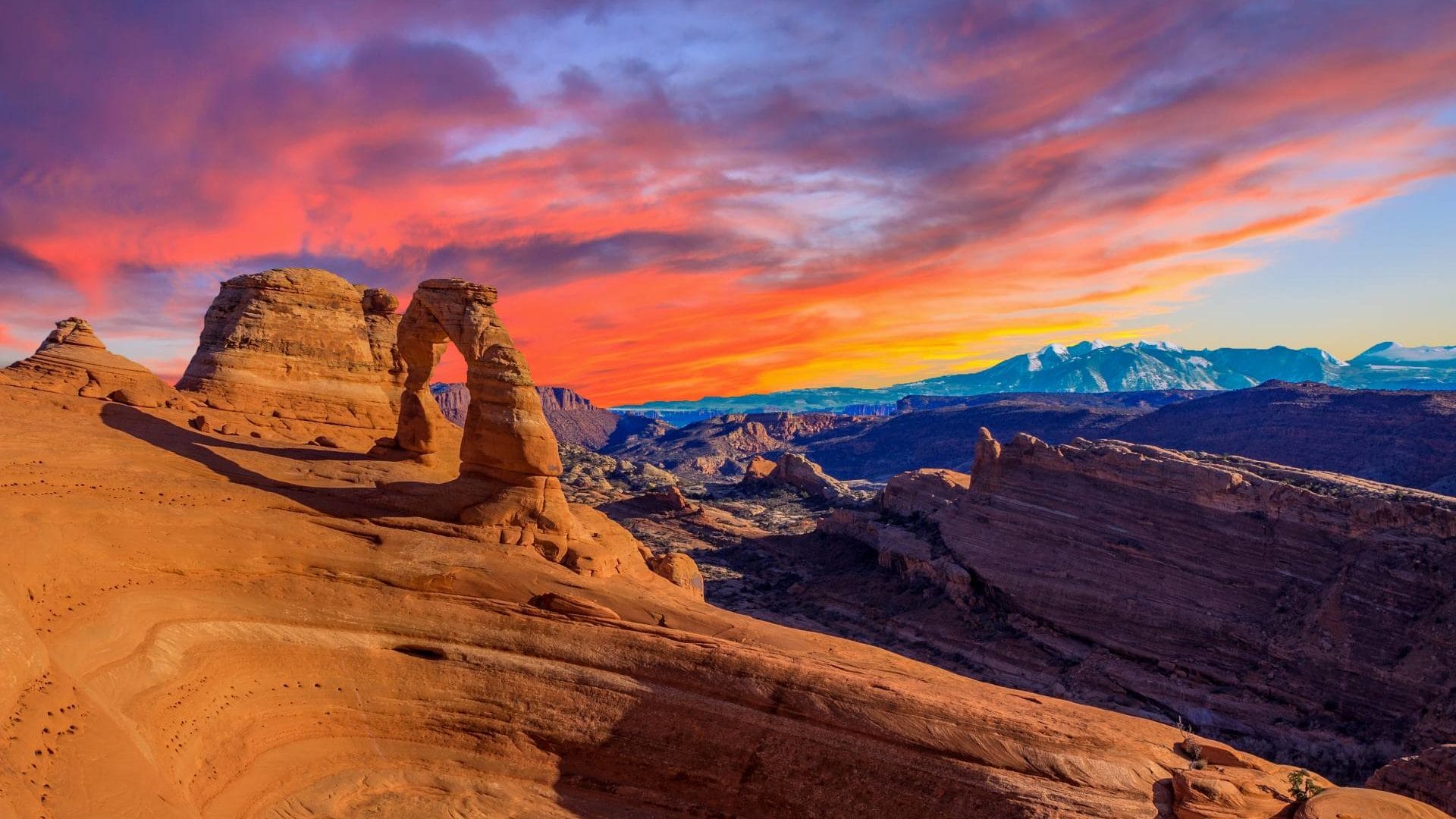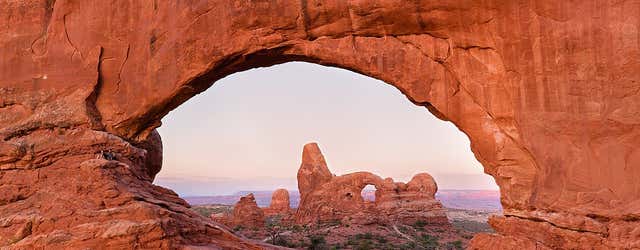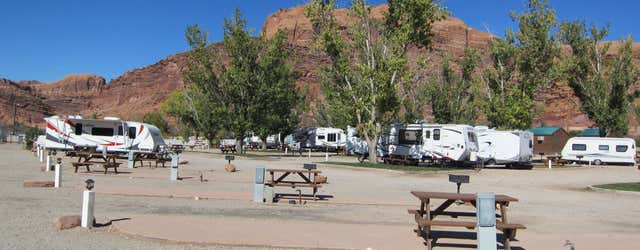Arches National Park is one of the most stunning spots in the national park system. Home to more than 2,000 natural arches, one is so famous that it graces nearly every travel brochure and license plate for the state of Utah. You’ll see other rock formations, too—fins, monoliths, pinnacles, and giant balancing rocks—in addition to the one of the darkest night skies in the United States. Many of the park’s most popular sites are visible from its Scenic Drive, but for those unafraid of a little physical exertion, Arches will reward you with amazing and unforgettable payoffs on each of its trails.

Written for you by park rangers
Who knows a national park best? Yep, the rangers who live and breathe its fresh, clean air every day. That’s who we turned to for help in creating this guide. Roadtrippers has partnered with the Association of National Park Rangers and convinced its rangers to spill their secrets for your benefit.
Getting to Arches National Park
Arches is located in southeastern Utah, just outside the town of Moab, one of the most highly-touted outdoor recreation areas in the country, if not the world. Most visitors fly into Salt Lake City International Airport (SLC) and then drive four hours to the park. Colorado’s Grand Junction Regional Airport (GJT) is serviced by several airlines and is about a two-hour drive from Arches. While Moab does have its own airport (CNY), flights are extremely limited, sometimes just one a day to and from Denver.
The state of Utah is blessed with four additional national parks: Bryce Canyon, Canyonlands, Capitol Reef, and Zion. Often, travelers will combine a trip to Arches with one or all of these spectacular sites. It’s also possible to dip into Arizona for a visit to the north rim of Grand Canyon National Park.
Timing your visit to Arches National Park
The temperature at Arches varies widely throughout the year with an average low in the winter of 22°F and an average high in the summer of a scorching 100°F.
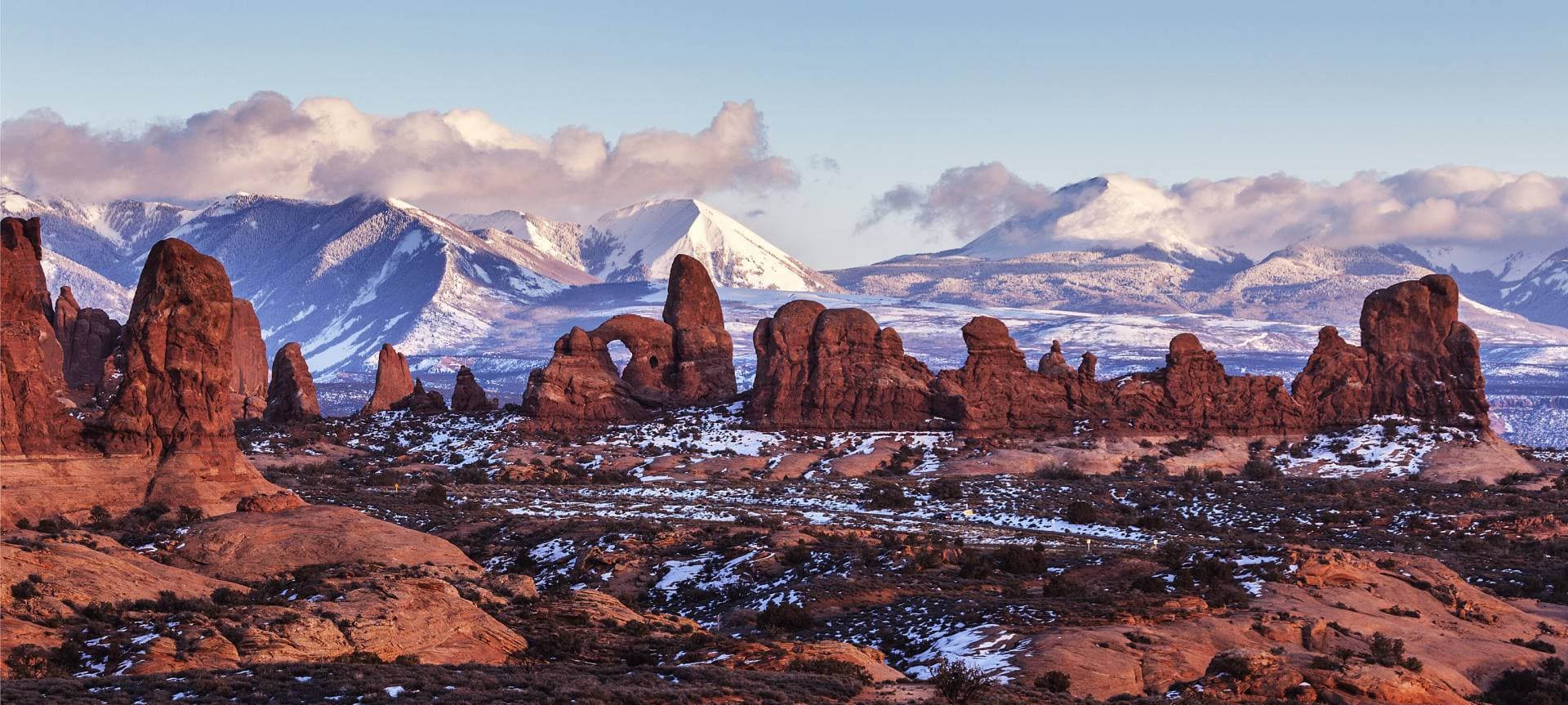
Wait times to enter the park can sometimes be more than 30 minutes. Try to arrive prior to 9 a.m. or after 3 p.m. to avoid traffic backups and parking issues.
Shoulder seasons
The months of April, May, September, and October typically see daytime temperatures ranging from 70°F to 80°F, making it the most comfortable times of year to visit. That being said, visitors are well aware how pleasant the weather is during the shoulder seasons, and as a result, the park is crowded. Holiday periods like Easter, Memorial Day, and Labor Day are especially busy, as is the third weekend in October when Utah public schools typically have a fall break.
If you’re a photographer, you’ll want to time your visit with sunrise and sunset for the most dramatic photos. Visit nps.gov for a list of which locations photograph best at particular times.
Summer
The summer heat does little to dissuade people from visiting Arches in droves. You can expect parking lots in the park to reach capacity throughout the summer. If you do come, be prepared to hike with more water than you think you’ll need.
Winter
If you’re one of the few visitors to venture to Arches during the winter, enjoy. You could have the park and its arches to yourself! The visitor center is open during the winter, but there are no ranger programs. Check the conditions before you arrive. While big snowstorms aren’t common, even small amounts of snow or ice can close roads and trails.
Things to do in Arches National Park
You’ll find plenty of wonders to explore and photograph at Arches.
Visitor center
The Arches Visitor Center is located just off U.S. Highway 191. It’s open daily from 9 a.m. to 4 p.m., though you can access the park 24/7. You’ll find indoor and outdoor exhibits here in addition to the park movie. Restrooms can be accessed 24 hours a day.
If you have kids (ages 6 through 12), make sure to pick up a booklet at the visitor center for the Junior Ranger program. The park also lends out Explorer Packs with binoculars, hand lens, naturalist guides, notebooks, and activity ideas as an alternative way to earn the Junior Ranger badge.
Drive the park
The only fully-paved road in Arches is Scenic Drive, a 25-mile, out-and-back road that passes the majority of the park’s viewpoints and trailheads. If you’re tight on time or don’t enjoy hiking, you could drive the park—stopping 10 minutes at each viewpoint—in about three hours.
Under normal conditions, Salt Valley Road is passable in two-wheel-drive vehicles and affords views of Klondike Bluffs and Tower Arch before heading out toward Interstate 70, but during periods of rain, this road may become undriveable. All other roads in the park require high clearance and four-wheel drive. Note that all-terrain vehicles are prohibited in Arches.
Biking
You can ride your bike on all paved and unpaved roads in the park; dirt roads are better suited to mountain bikes. There’s no trail riding in the park, but there’s a bike path that connects Moab to the park entrance.
Moab is a world-famous mecca for mountain biking. Its highly-technical, 9.6-mile Slickrock Bike Trail is a bucket list ride for mountain biking enthusiasts. That being said, you can find trails for all skill levels in and around Moab.
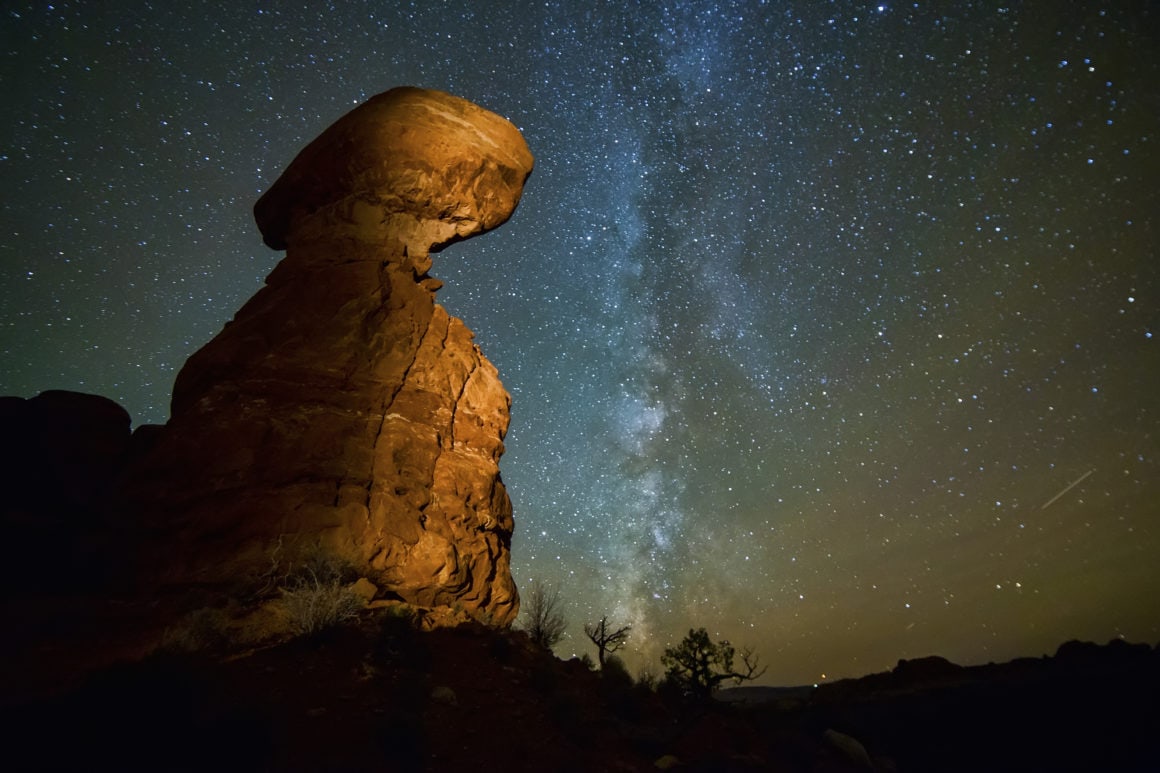
Stargazing
If possible, return to the park at night to experience some of the darkest skies in the country. On a clear night—especially during a new moon—you’ll see an astounding number of stars. For the best viewing, drive north away from the lights of Moab. Here are some favorite spots for stargazing:
- Balanced Rock Picnic Area
- Windows Section
- Garden of Eden Viewpoint
- Panorama Point
Canyoneering, horseback riding, and rock climbing are also allowed in Arches.
Hiking in Arches National Park
The most popular way to experience Arches and its many natural wonders is on foot. Fortunately, you’ll find hikes for every skill level.
As is the case with most national parks, pets are not allowed on the trails or at the viewpoints. However, you should be very careful about leaving your furry friends in your vehicle, even with the window partially opened. The desert heat can be deadly. Instead, consider boarding your pets in Moab for the day. If you’re looking to hike with your dog in the early morning or early evening, try the 3-mile (round trip) Corona Arch Trail outside the park on Bureau of Land Management land. This scenery is comparable to Arches.
Easy hikes
The 1-mile (round trip) Windows Trail takes you by North Window, South Window, and Turret Arch. These are three of the largest arches in the park, so the scenery is spectacular!
Across the parking lot from the Windows Trail is the ½-mile (round trip) Double Arch Trail, which is not to be missed. The best view is under the arch looking up as it’s hard to see the full scope of the arch from the parking lot.
The 1.6-mile (round trip) Devils Garden Trail leads to the longest arch in the park—Landscape Arch—at over 300 feet. That’s the length of a football field! You can continue on this trail, but it becomes much more strenuous after Landscape Arch. Instead, to see more arches, take the spur trails to Pine Tree Arch and Tunnel Arch.
Wear good hiking shoes, a wide-brimmed hat, and sunscreen. Bring at least two liters of water per person. You’ll need every drop!
Moderate hikes
The Park Avenue Trail is 2 miles (round trip). The trail gets its name from visitors comparing the rock formations to the skyscrapers of New York City. Those formations are more reminiscent of Monument Valley than what people may associate with Arches, so this trail offers some variety to the rest of the park. Start at the Park Avenue Viewpoint and descend the staircase to a stone wash where towering rock walls surround you. (This trail can also be started from the Courthouse Towers Viewpoint.) While this trail doesn’t get as much attention because of the absence of arches, the giant monoliths are quite stunning.
Strenuous hikes
Man, it’s not easy, but the Delicate Arch Trail has the best payoff in the park. This 3-mile (round trip) hike with 480 feet of elevation gain starts from the Wolfe Ranch parking area. You’ll want to plan two to three hours for this hike. If you’re visiting in the summer, begin early as this unshaded trail can be extremely hot. But, without a doubt, this arch is the one to see.
There’s a 600-foot rock ledge at the end of this hike where you’ll want to keep a close eye on kids.
The 4.5-mile (round trip) Double O Arch Trail is a “great bang for your buck” hike with six arches to see which aren’t visible from the road or any viewpoint. This hike starts at Devils Garden Trailhead along the same path to Landscape Arch.
Because of all the rare plants and fragile soils in this confined area, you’ll need to explore the Fiery Furnace hike either with a ranger on a pre-booked tour or obtain an individual permit (only 75 per day). The trail travels through a labyrinth of canyons and fins and requires hikers to be reasonably fit, as you’ll need to scramble over some rocks and squeeze between others. The 2-mile hike takes three hours to complete. Children (age 5 and under) are not permitted on the tours. Watch this video to see if this hike is for you. The ranger-led tour is offered March through October. You’ll want to reserve tickets months in advance.
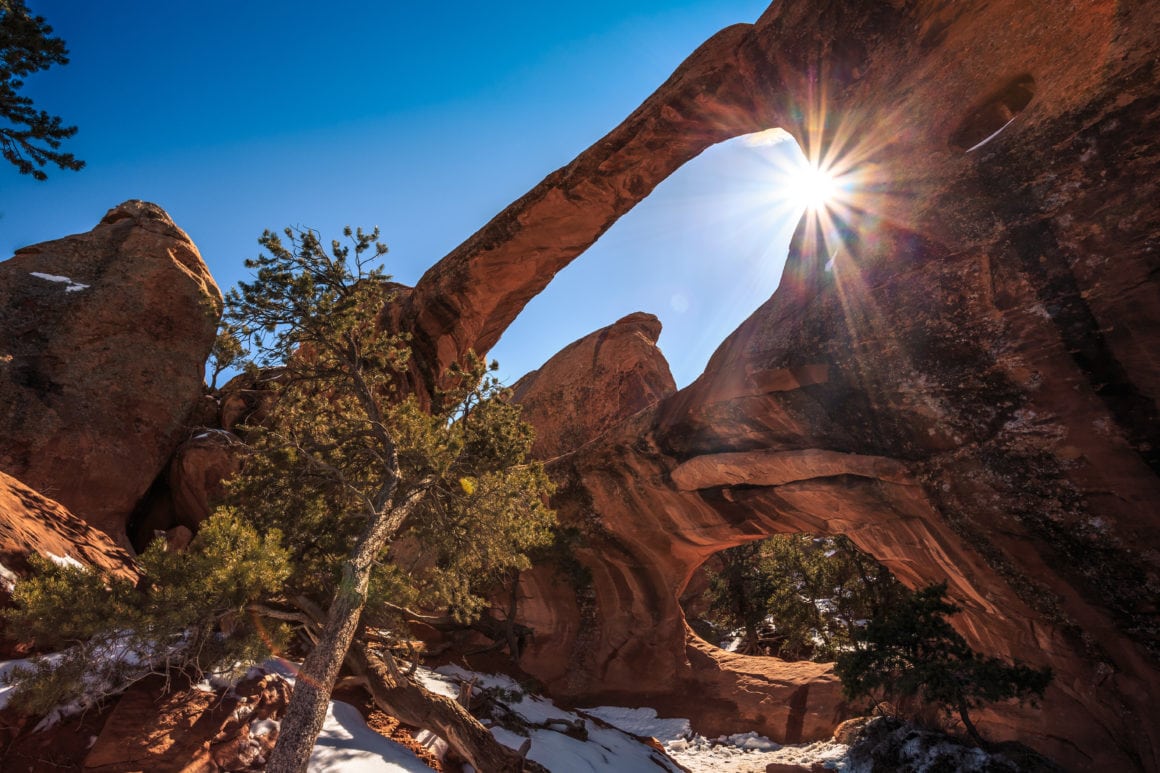
Accessible trails
Balanced Rock Trail has a short, paved sidewalk to the feature. There’s also a gravel path at the Lower Delicate Arch Viewpoint which is close to the parking area and allows you to view the iconic arch. Visit nps.gov for more information on accessibility.
Staying in and around Arches
Devils Garden is the lone campground in the park. While spectacular to say the least, it can be very difficult to get a site here. You can reserve campsites up to six months in advance for March 1 through October 31. The rest of the year, it’s first come, first served. RVs (maximum length: 40 feet) and trailers are permitted but not in the group area. There are no hookups, no dump station, and no cell coverage.
Outside of the park, you can find various camping sites on Bureau of Land Management (BLM) property. The Moab Field Office maintains 38 campgrounds with more than 600 sites. If you’re looking for more amenities including a pool, consider Moab Valley RV Resort and Campground. You’ll also find plenty of hotel accommodations in Moab including newly-opened Springhill Suites Moab which is less than two miles from the park entrance road.
Eating in and around Arches National Park
There are no restaurants in Arches National Park, though the visitor center bookstore has a small selection of snacks.
In Moab, this ranger recommends the blue cheese burger at Peace Tree Juice Cafe, the pad thai at Arches Thai, and nearly everything—Greek salads, falafels, and gyros—at Sultan Mediterranean Grill.
If you’re looking for an evening outing, Canyonlands by Day and Night offers a cowboy-style, Dutch oven dinner followed by a guided, two-hour cruise down the Colorado River on the Moab Queen II. On the return trip, you listen to music and stories about the area’s cowboy and Native American history while floating by the illuminated canyon walls.
How many days should you plan to spend in Arches National Park?
Arches National Park is set up for visitors to visit in a single day with a focus on driving the 25-mile Scenic Drive, pausing to gaze at red rock landscapes at conveniently-located viewpoints, and hiking a few trails for a closer look at the magnificent arches, soaring pinnacles, massive fins, and towering monoliths. Of course, if you have a few more days to spend in the park, you can hike all the trails including the ranger-led (or permit only) Fiery Furnace trek.
If you have one day to experience Arches National Park, here’s a solid plan:
- Instead of starting your visit at the Arches Visitor Center (which opens at 9 a.m.), head straight to the Wolfe Ranch parking area where you’ll find the trailhead for Delicate Arch. During the summer, try to be on the trail no later than 7:30 a.m.
- After your hike, head to the Delicate Arch Viewpoint to see the arch from a different perspective. You’ll probably be ready for a picnic lunch, as well.
- Back on Scenic Drive, head north toward Devils Garden, stopping at viewpoints along the way for photos.
- Hike the Devils Garden Trail to Landscape Arch. If you have the energy, hike the 4.5-mile (round trip) Double O Arch Trail to see all six arches.
- After a snack, double back along Scenic Drive to the Windows section for a short, 1-mile hike to see three of the largest arches in the park.
- If you can muster the energy, hit the Park Avenue Trail to see the park’s red rock monoliths.
- Stop at Arches Visitor Center for a souvenir and a few well-deserved moments of air conditioning.
Image header credit: Shutterstock
